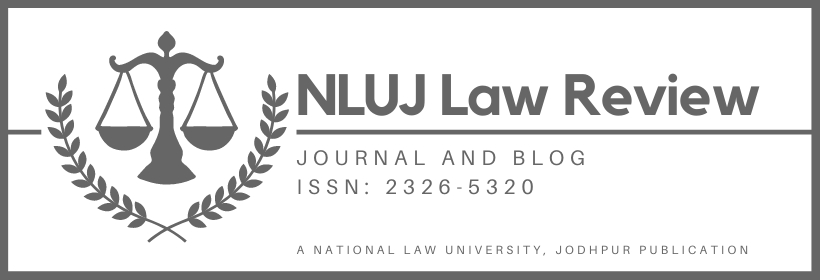Section 6 of the Income-Tax Act, 1961 (“IT Act”) encompasses the provisions concerning the determination of the residency of a person. Pursuant to this provision, a person would be a resident of India under the IT Act, inter-alia, if he is in India for a period amounting to 182 days or more in the Previous Year. On the contrary, any person who is not a resident would be a ‘non-resident’ under the IT Act. This determination of residency is imperative since it ascertains the total income of a person on which income-tax is levied. Pursuant to Section 5 of the Act, for a resident of India, the total income would include all incomes irrespective of where it accrues or arises; whereas, for a non-resident or a resident but not ordinary resident, the total income only extends to such income which is either received or accrues or arises in India.
In March 2020, with the outbreak and spread of the novel corona virus (“COVID-19”), the Government of India declared a complete lockdown and suspended international travel. Accordingly, numerous persons were concerned that they would lose their ‘non-resident’ or their ‘resident but not ordinary resident’ status under the IT Act due to their unplanned and extended stay in India in the Financial Year (“FY”) 2019-2020. The Central Board of Direct Taxes (“CBDT”) ensured that adequate relief was provided to such persons through a circular issued on the 8th of May, 2020. The CBDT clarified that their presence in India in the specified period would not be considered while determining their residential status for FY 2019-2020. Notably, the lockdown and the international travel restrictions were also imposed in FY 2020-2021. Once again, there was a similar issue concerning the determination of the residential status of such persons under the IT Act. This time the CBDT did not issue any circular clarifying their position as they did in 2020.
However, in the case of Gaurav Baid v. Union of India, the Supreme Court of India stated that the CBDT should consider the representations by such affected persons within three weeks of the receipt of such representation. Even though this case only concerned one individual, it opened the floodgates for various persons to approach the CBDT. Accordingly, to streamline such a process and in light of the Supreme Court order, the CBDT issued a circular on the 3rd of March, 2021 (“2021 Circular”).
In this piece, the author will evaluate the 2021 circular in a two-fold manner. First, the author will dissect the contents of the circular and explain the considerations of the CBDT for not granting a blanket relief. Second, the author will critically analyse the shortcomings of the circular and its failure to provide the expected relief. Even though the 2021 circular became redundant after March 31st, 2021 it is important to examine the effects of the same since a similar relief could be provided in the FY 2021-2022, considering the impact of the second cave of COVID-19.
Considerations of the Central Board of Direct Taxes
The CBDT was extremely clear in their approach. They did not wish to provide any blanket relief to persons concerning their residential status. In furtherance of the same, the CBDT made six observations.
First, the CBDT stated that a short stay in India in the FY 2020-2021 wouldn’t be sufficient for a ‘non-resident’ or a ‘resident but not ordinarily resident’ to become a ‘resident’ since that would require such a person to stay in India for a period of at least 182 days pursuant to Section 6 of the IT Act. Even though the CBDT didn’t give any specifics, it can be inferred that the CBDT made an assumption that such a person would have had the opportunity to leave India since travel restrictions and lockdowns were eased.
Second, the 2021 Circular considered the consequences of possible relief. It was reasoned that a multitude of states such as the United States of America and France have a similar requirement for determining residency, that is stay in their territory for a period of 182 days or more. Accordingly, the CBDT inferred that if a relief was provided, a person availing such a relief might not pay tax in any jurisdiction.
Third, the CDBT discussed the tie-breaker rule under the Double Taxation Avoidance Agreement (“DTAA”). According to them, even if a person becomes a resident of two different countries, the DTAA can be used to determine actual residency. For instance, the Indo-US DTAA considers various factors to determine residency such as nationality, permanent home, habitual abode etc. Furthermore, the CBDT observed that, even if an individual becomes a resident in India, he would be classified as a resident but not ordinarily resident, which makes his/her income earned abroad not taxable in India.
Fourth, the 2021 Circular also elaborates on the possible taxation of employees of a foreign country stranded in India. The general provision under the DTAA states that an employee’s income, salaries and wages and other remuneration is taxable in the county in which such employee resides unless he stays in another country for a period of 183 days or more. Once again, the CBDT assumed that it would be impracticable for any employee to be stranded in India for such a long period.
Fifth, the CBDT also highlighted that person resident in India would be entitled under Rule 128 of the Income-tax Rules, 1962 to claim credit of taxes already paid in a different tax jurisdiction.
Last, the 2021 Circular examines the international experience concerning the determination of residential status. The CBDT stated that the Organisation for Economic Co-operation and Development themselves have stated that it is unlikely that the COVID-19 pandemic and following lockdowns would impact the residential status under any tax treaty in their policy response to the COVID-19 crisis. Furthermore, the CBDT also compared the measures undertaken by different tax jurisdictions. The United States of America and the United Kingdom had provided relief of 60 days subject to certain specifications and the existence of exceptional circumstances. Australia, on the other hand, allowed relief only after examining the facts and circumstances of each individual case.
Therefore, the CBDT concluded by stating that, “there does not appear a possibility of the double taxation of the income the Previous Year, 2020-2021”. However, to ensure no person is detrimentally affected, the 2021 Circular also provided the opportunity for individuals to furnish information by the 31st of March, 2021 concerning their residential status and the CBDT would examine their claim on an individual basis.
Shortcomings of the 2021 Circular
Even though the CBDT ensured that they took an accommodative and pragmatic approach through the 2021 Circular, there were several drawbacks and issues which weren’t addressed. First, the 2021 Circular did not provide any relief to persons who were previously residents but had shifted their residence to a different tax jurisdiction in the last 2 or 3 years. There was a strong possibility that such persons could have returned and consequently, been stranded in India during the FY 2020-2021, thus making them ‘resident and ordinary resident’ under Section 6 of the IT Act.
Second, the CBDT, in spite of addressing the charge of tax, failed to account for the procedural and compliance burden on such affected persons. Essentially, the affected persons would have to ensure that adequate compliance has been undertaken both under the Indian tax jurisdiction and the foreign tax jurisdiction. Without fulfilling the compliance requirements of both tax jurisdictions, the affected person cannot determine his residential status and claim credit of taxes paid, if any exist.
Third, the decision of the CBDT to review the facts and circumstances of each case would result in a lot of ambiguity and subjectivity since the decision of determining the residential status would be under the complete discretion of the CBDT. This would be detrimental in ensuring equity between all such affected persons.
Fourth, the 2021 Circular doesn’t shed any light on issues such as creation of a place of effective management. The ‘place of effective management’ means a place where key management and commercial decisions that are necessary for the conduct of business of an entity are made. Any person stranded in India would eventually be compelled to carry out the business in India. Accordingly, if such action results in the creation of the place of effective management of business, then such person’s company would be considered as a resident in India, pursuant to Section 6 of the IT Act. While there are specific and explicit threshold mentioned under the provision for the creation of a place of effective management, the 2021 Circular should have provided certain exemptions.
Fifth, the 2021 Circular doesn’t address the issues arising due to the unintended establishment of a business connection under Section 9 of the IT Act or a permanent establishment under any DTAA. A business connection or a permanent establishment will be created, if any profits of an individual stranded in India are attributable to it. The CBDT should have provided a relief stating that employees of a foreign company stranded in India would not suffice to create either a business connection or a permanent establishment.
Last, in spite of the 2021 Circular stating that a person stranded in India would most likely qualify as ‘resident but not ordinarily resident’, which make such a person not liable to be taxed on income sourced in a foreign country. However, a person who qualifies as ‘resident but not ordinarily resident’ would pay tax on the income earned in India at rates that are considerably higher than what the rates are for ‘non-residents’. The CBDT has failed to address this issue.
The way forward
In the opinion of the author, the 2021 Circular doesn’t achieve the intended purpose since it only enumerates the different circumstances where a temporary dislocation of a person due to the COVID-19 restrictions would not lead to double taxation. However, it is important to note that FY 2021-2022 remains unpredictable due to the arrival of the devastating second wave in the first quarter and may well continue to the second and third quarter of the financial year. Similar problems of determining residency would arise in the FY 2021-2022 due to the unpredictable nature of the on-going pandemic. At that time, the CBDT should be more proactive in ensuring that adequate explanations and reliefs are provided to affected persons rather than an ambiguous response such as the 2021 Circular.
This article has been written by Sridattha Charan, student at Symbiosis Law School, Pune.



